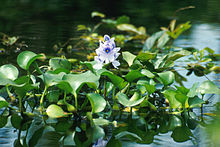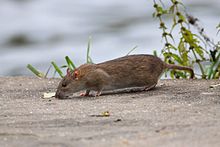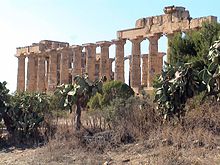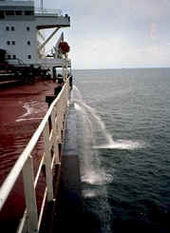Introduced species
![]()
Neophyte and Neozoon are redirections to this article. For other meanings, see Neophyte (disambiguation) and Neozoon (artist group).
Neobiota (plural; also neobionts, sing. the neobiont; from ancient Greek νέος néos "new" and βίος bíos/βίοτος bíotos "life") refers to species and subordinate taxa that have become established with human influence in an area where they were not previously native. A minority opinion is that taxa spreading without human influence are also called neobiota. However, the term neonative has been proposed for such taxa. Neobiotic plants are called neophytes (sing. the neophyte; φυτόν phytón "plant, plant"), neobiotic animals neozoa (sing. the neozoon; ζῶον zṓon "creature, animal"), and neobiotic fungi neomycetes (sing. the neomycete; μύκης mýkēs "fungus"). These three terms are in common use, especially in German-speaking countries. In English, predominantly summary terms such as alien species or, in the case of displacing potencies, invasive species are used without distinction between plants, animals and fungi.
One of the most important means of transport (vectors) for neobiota today is the global transport of goods, which enables the unintentional spread of neobiota. The process of immigration or introduction, establishment and spread in the new area is called hemerochory or biological invasion. The related branch of biology is invasion biology.
Neobiota are usually characterized by typical properties such as adaptability, high reproductive rate and often an association with humans. These characteristics, together with the susceptibility of the new area to biological invaders (invasibility) and the number of individuals displaced (propagule pressure), determine the probability of success in establishing a stable population after a dispersal event.
While many neobiota do not cause noticeable negative impacts, some established neobiota have a strong negative influence on the biodiversity of their new habitat. Often, the composition of the biocoenosis changes considerably, for example due to predation or as a result of competitive pressure. Neobiota can cause economic damage, for example as forestry, bank protection and agricultural pests. They can also act as vectors of pathogens, some of which can also infect crops, livestock and humans.

Sargassum muticum , an invasive seaweed belonging to the brown algae group.

Thick-stalked water hyacinth (Eichhornia crassipes), a worldwide spreading neophyte

Norway rat (Rattus norvegicus), a worldwide successful neozoon
Terms
The terminology of invasion biology is very inconsistent. In the English-speaking world, terms such as invasive species or similar are mainly used, which are interpreted differently and do not differentiate between different animal groups or characteristics of the species. The International Union for Conservation of Nature and Natural Resources (IUCN) distinguishes in its definitions between alien species and invasive alien species. Alien species are species that have been introduced into a foreign area through human influence. The attribute invasive is attributed to species that displace already native species in their new habitat.
In addition to the inconsistency, the military or even xenophobic connotation of invasive and alien has also been criticized. The value-neutral term neobiota unites all species that have colonized new areas through human influence. However, the terms with neo are not used in a completely uniform manner:
- According to one view, the terms neobiota or neophytes or neozoa apply regardless of when a species was introduced.
- According to another understanding, these designations apply only to species carried over from 1492. The year of Columbus' discovery of America was chosen as the boundary because it marks the beginning of the intensive exchange of living organisms between Europe and America. Previously displaced species, such as crops displaced during the Neolithic Revolution, are called archaeobiota, archaeophytes (plants) or archaeozoa (animals). These terms are mainly used in the German-speaking world.
Numerous other categories exist for alien species, see Kühn & Klotz (2002). Archaeobiota and neobiota are grouped under the term adventive species (for plants: adventive plants). Depending on the (unconscious) mode of introduction or (conscious) mode of introduction and the subsequent degree of establishment, there are further differentiations among adventitious plants.
The term neophyte goes back to the accepted definition of 1918 by Albert Thellung, which was later modified many times. The corresponding zoological definition (neozoa) is much more recent (Ragnar Kinzelbach 1972) and is not as widespread and generally accepted. The term neomycetes was introduced by Markus Scholler in 1999.

Opuntias originating from America at an ancient Greek temple in Selinunte, Sicily
Biological invasions
→ Main article: Biological invasion
Probably the most important vector for neobiota at present is global trade; its steady growth increases the number of new neobiota considerably. Among the most important vectors are cargo ships, where neobiota can be introduced hidden in containers or cargo, for example. Aviation also further spreads neobiota. Spread through trade routes is mostly unintentional. At the country level, there is a correlation between economic strength and the number of neobiota. In the past, and less frequently today, neobiota have also been deliberately released, e.g. as biological control agents or game. Similarly, neozoa can escape from human care and establish stable populations, and crops can become established in the wild. Invasive species are considered a significant part of globalization.
When humans influence the environment, organisms can spread indirectly and migrate to a new area as neobiota. For example, canal constructions allow aquatic organisms access to a new area. However, it is not always possible to clearly determine whether the species have spread due to anthropogenic environmental changes and are therefore to be classified as neobiota. The spread of the Eurasian Collared Dove (Streptopelia decaocto), for example, could be due to the creation of agricultural landscapes as a food supply for the dove on the one hand, and to genetic adaptations of the dove on the other.
According to a 2015 study published in Nature, at least 13,186 plant species have been shown to have been transported from their original habitats to other regions and become native there due to human influence; the largest increase was in North America, and the main source for all other continents was Europe.

Ballast and bilge water are among the most important vectors for aquatic neobiota.
Search within the encyclopedia